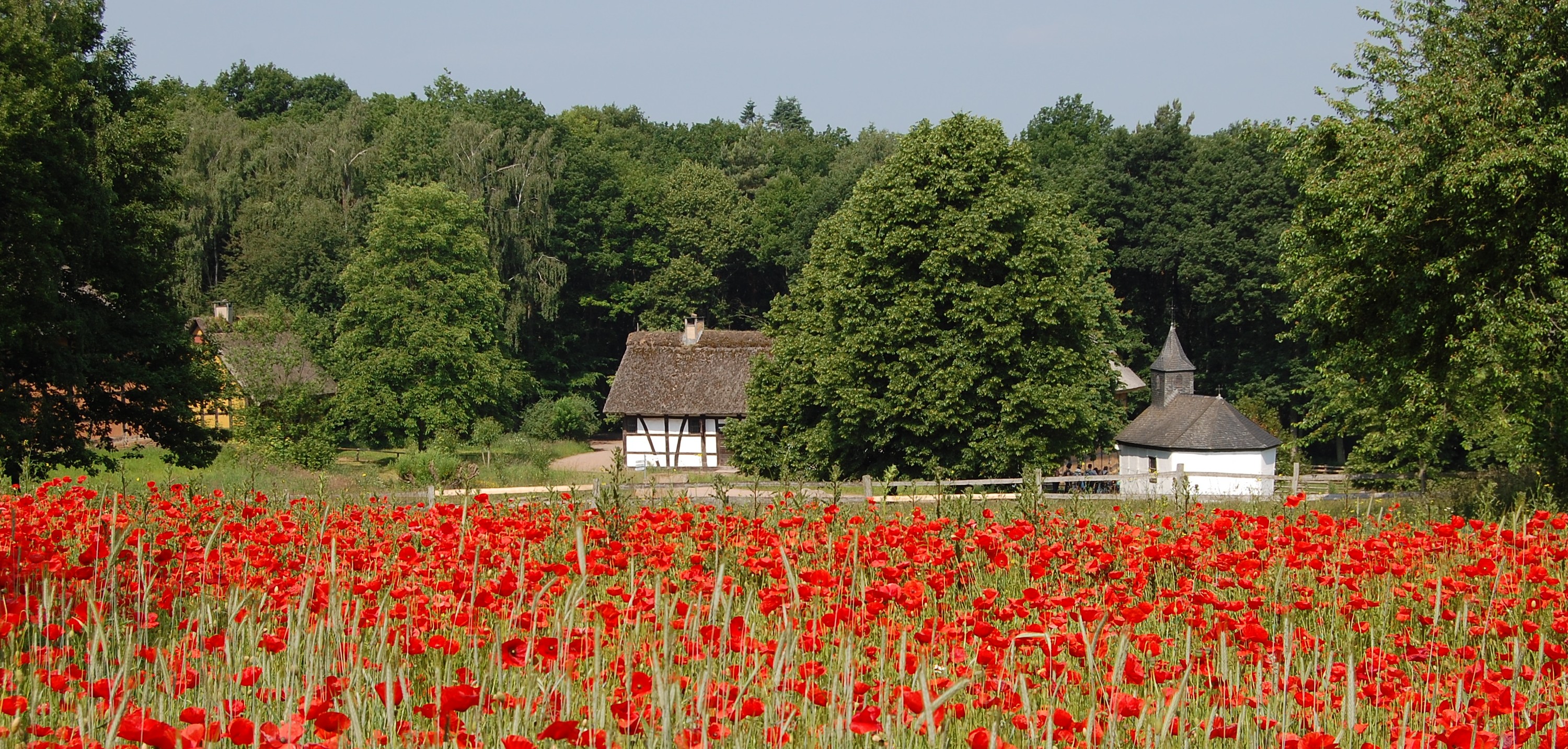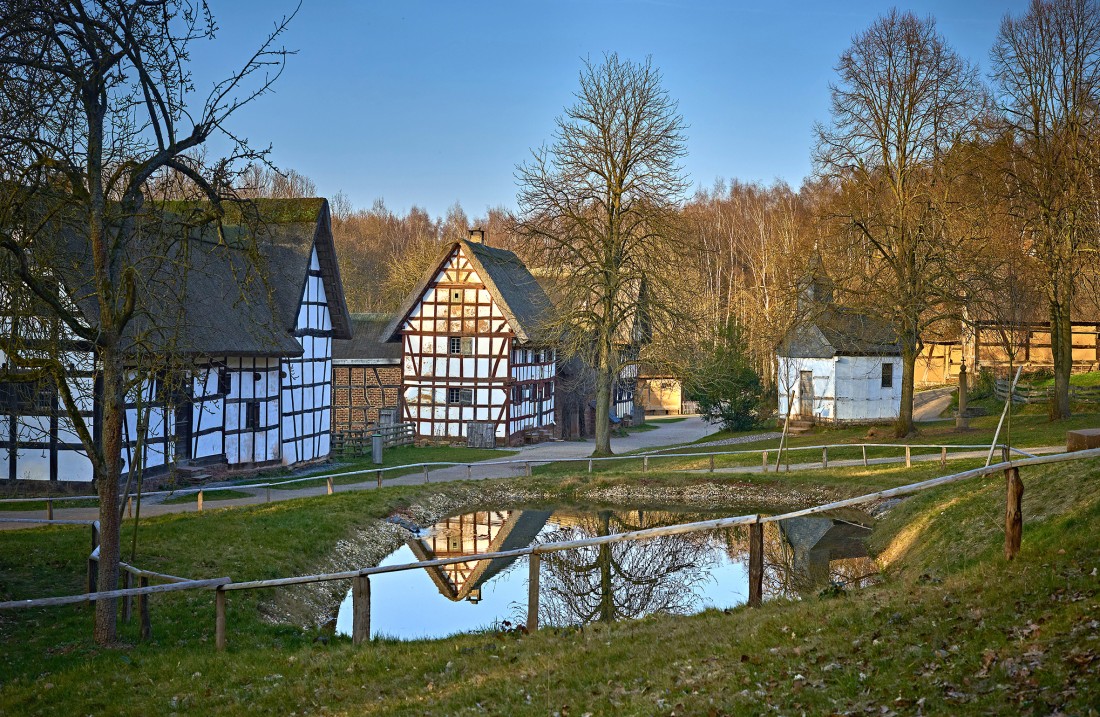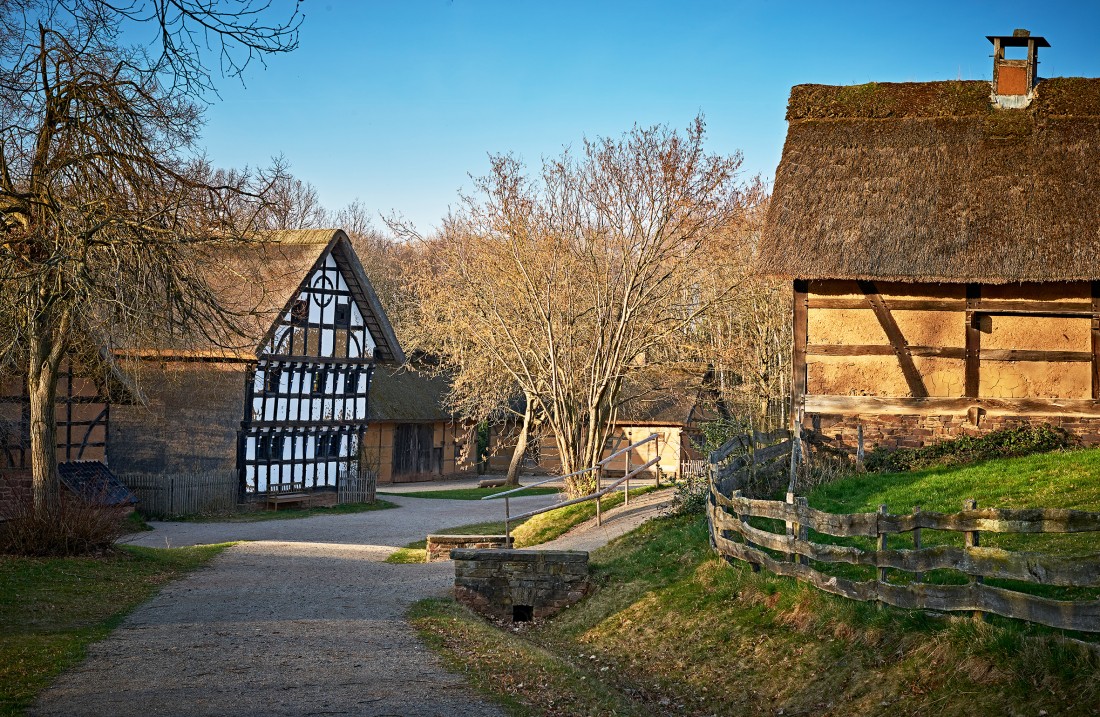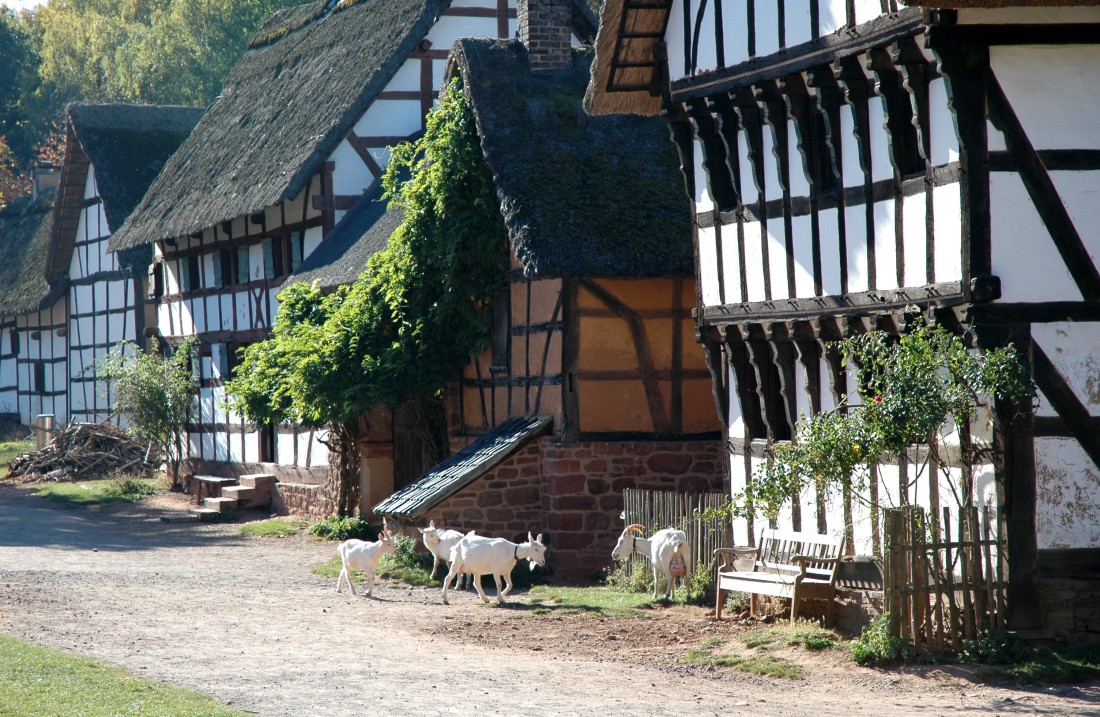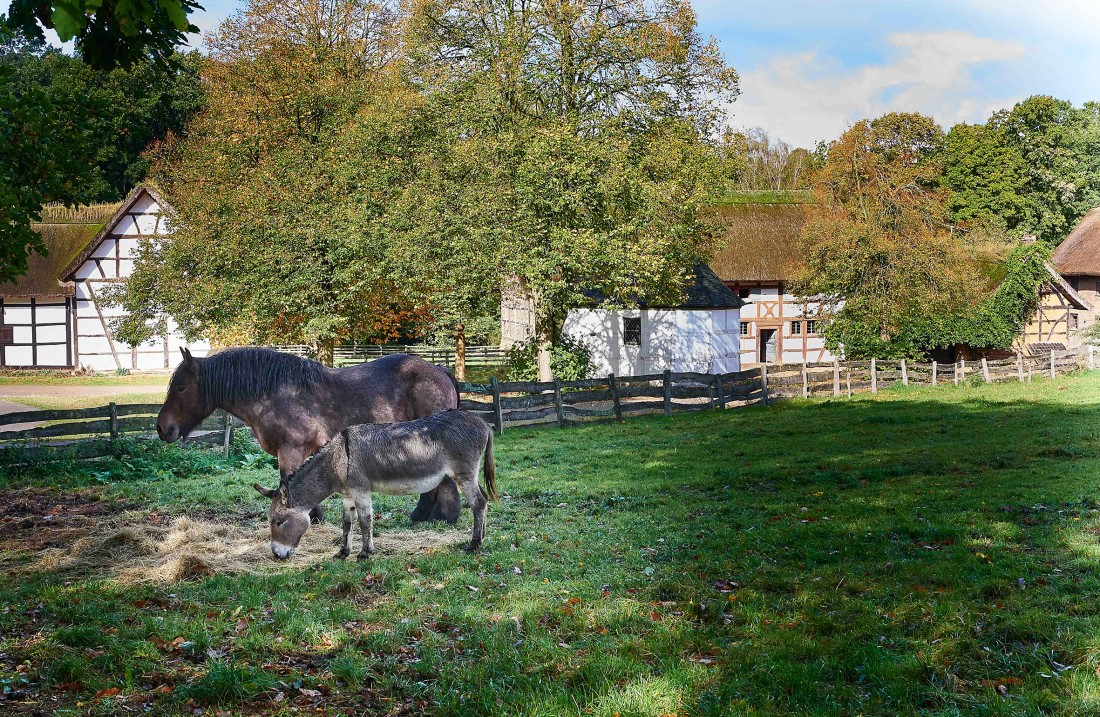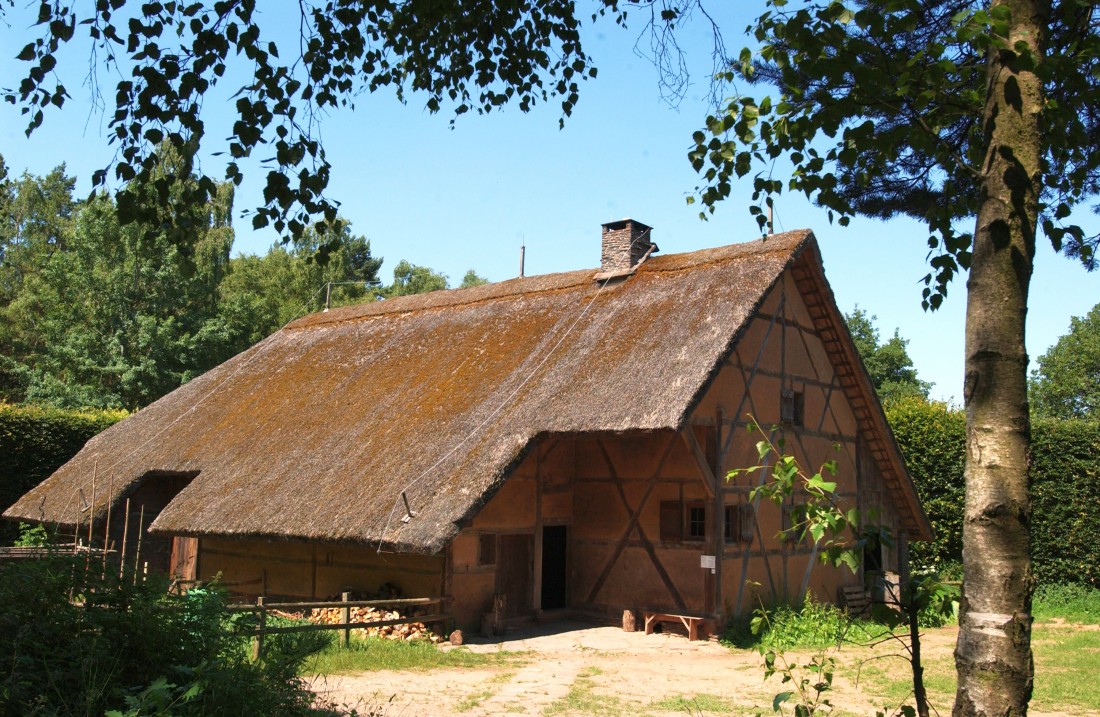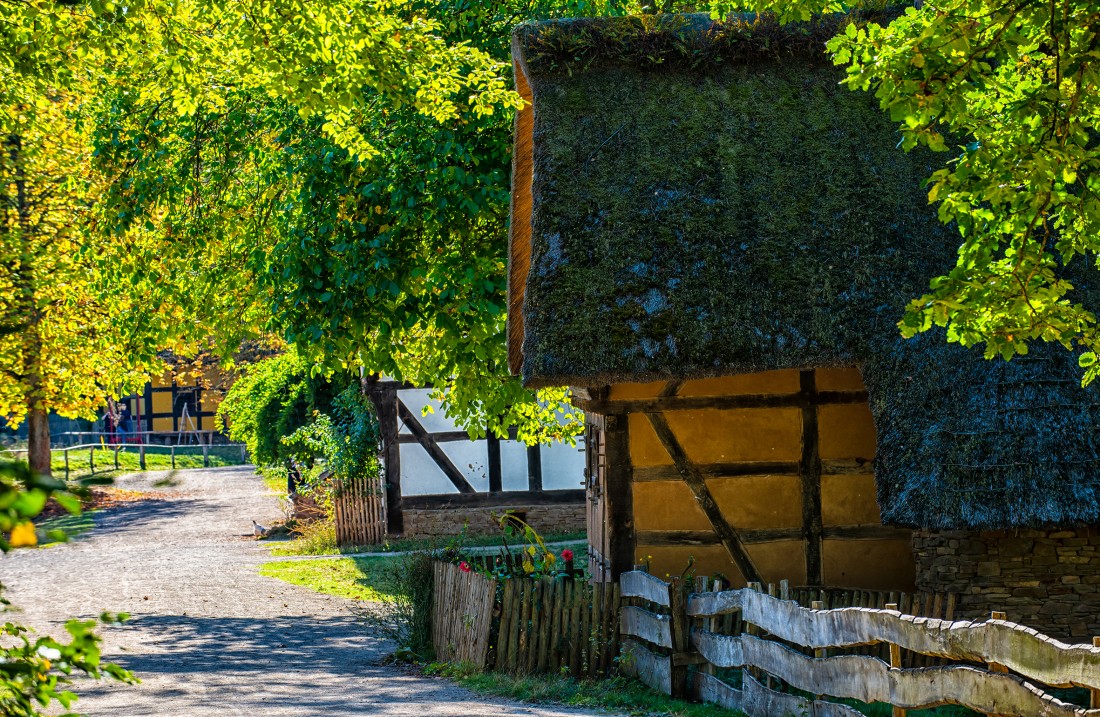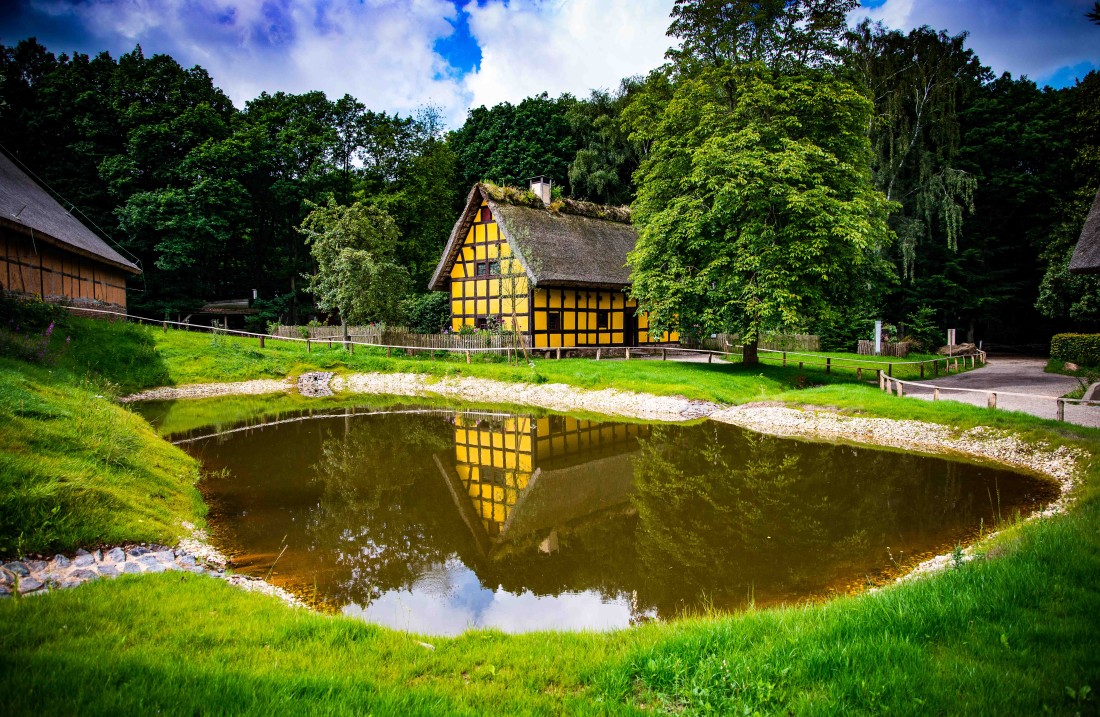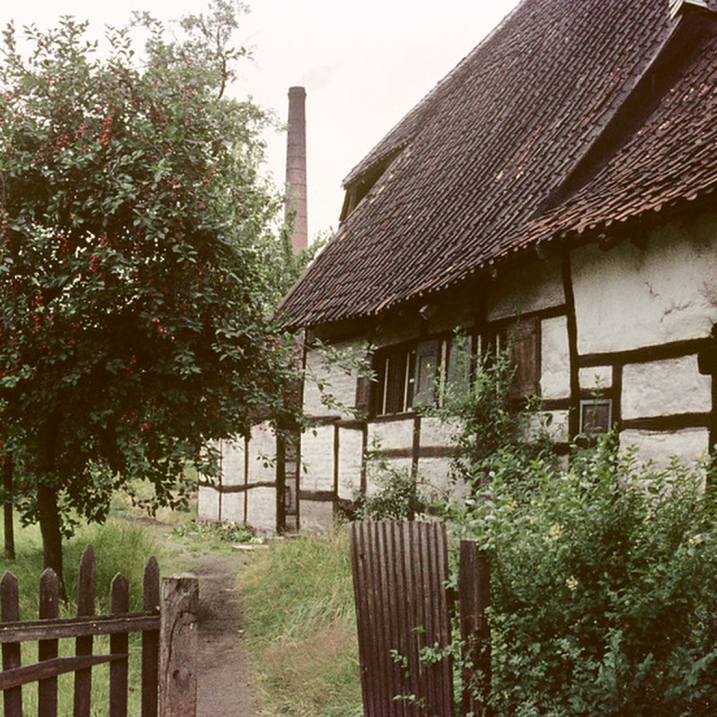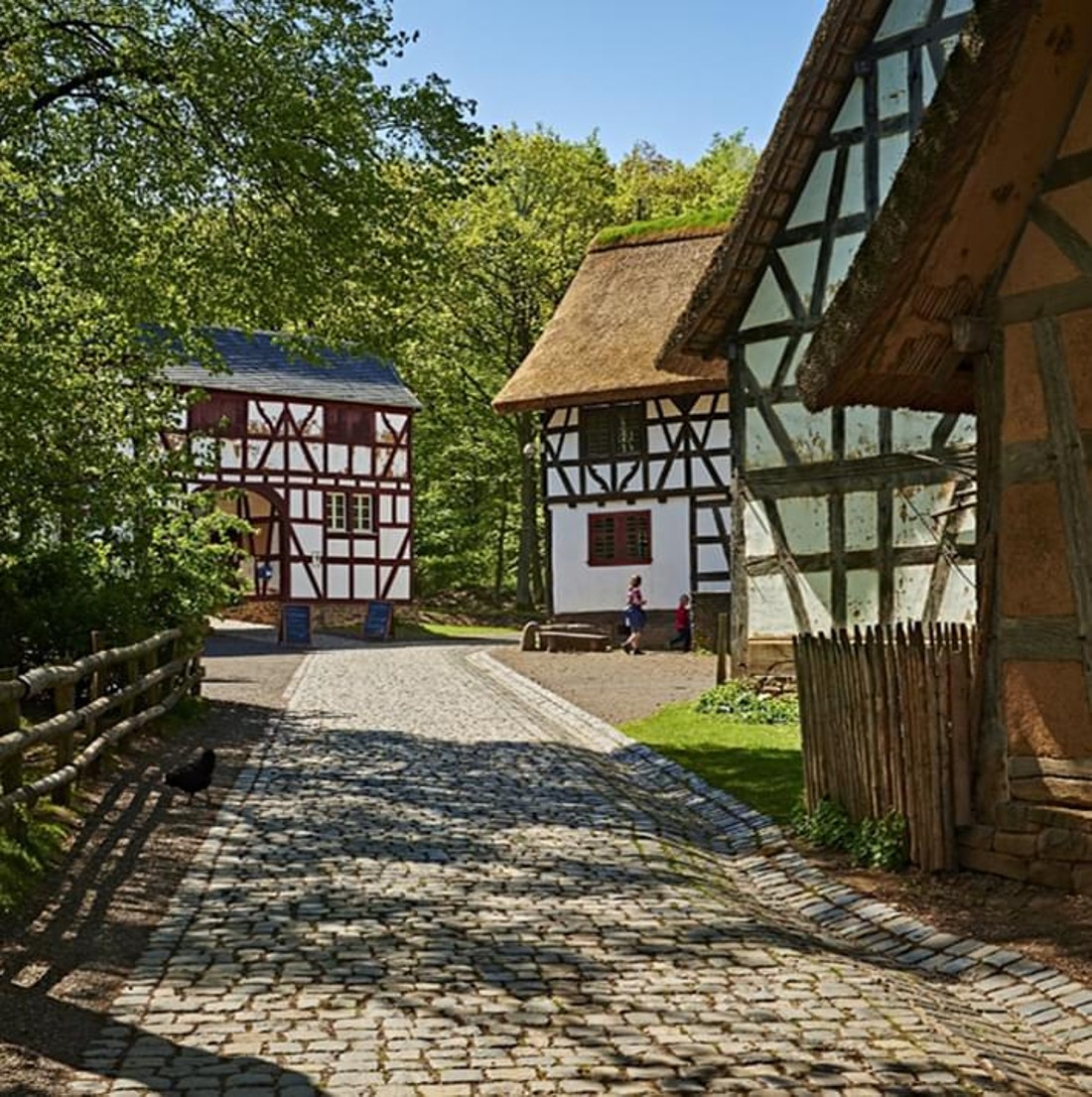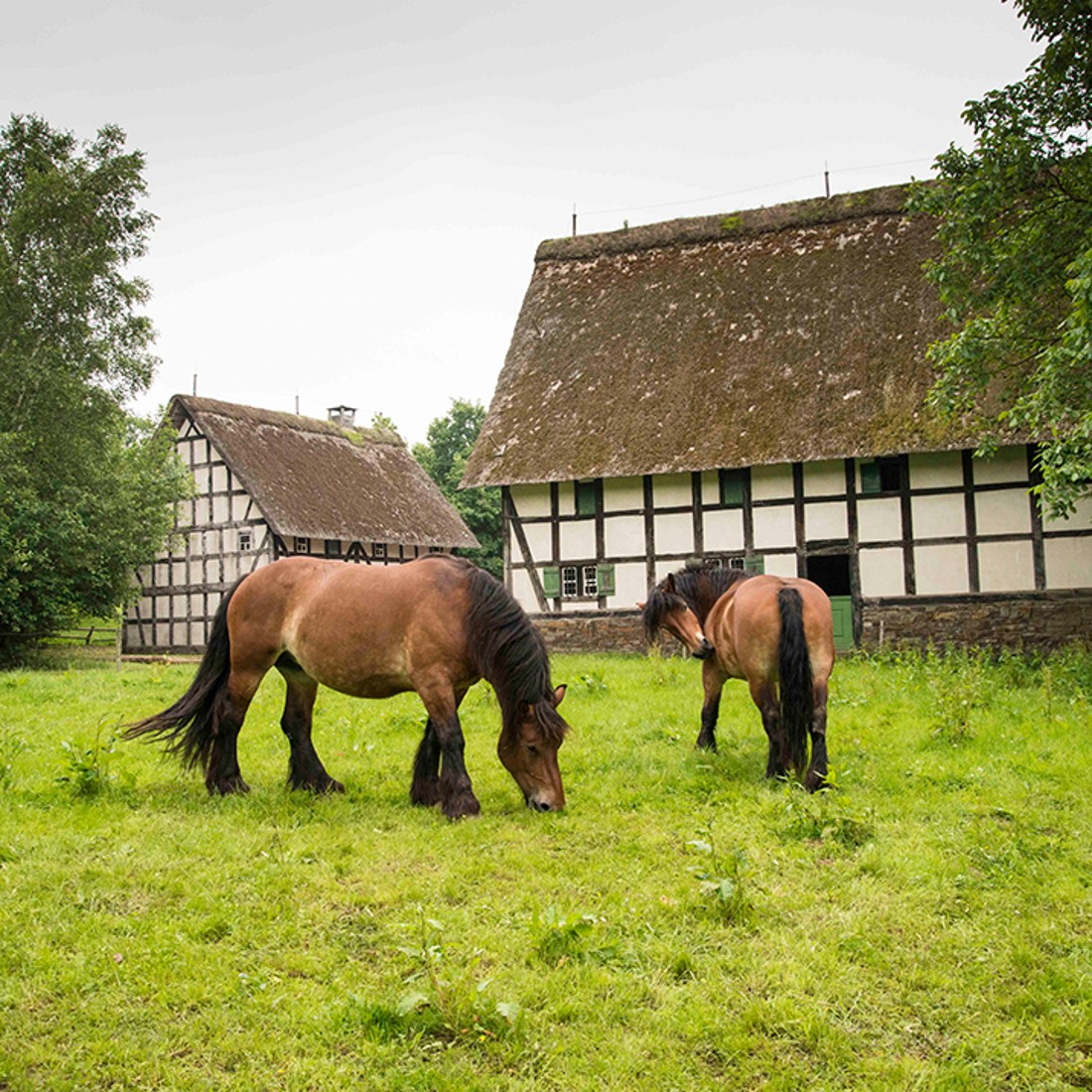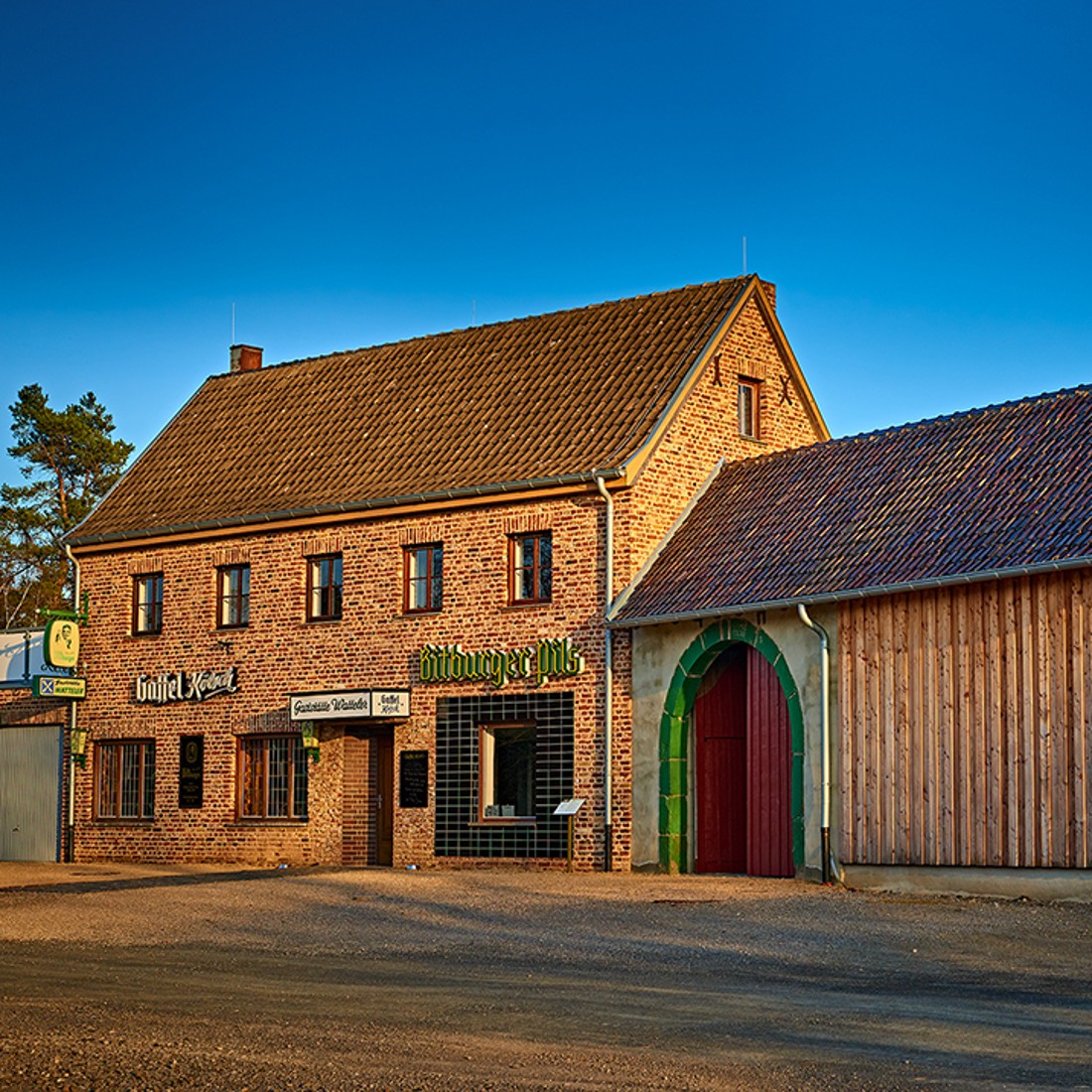Eifel
Eifel
The Eifel, left of the Rhine between Aachen and the Moselle river, forms the Rhenish part of the Ardennes. Just as the Eifel includes many different landscapes, its villages also appear to feature a variety of buildings. While in the south, in the direction of Trier the houses were traditionally constructed out of stone, above all from red sandstone and broken stones, in the north half-timbered houses dominated the scene. It was not until the industrialization in the 19th century that more and more houses were built with bricks. This northern area is represented in our museum.
Forms of farmsteads and settlements
Village settlements define the image of the Eifel. Large, uniform streets and haphazard villages can be found, above all in the foothills and the early settlements bordering on the Eifel.
Imposing farmsteads characterize the Lower Rhine basin, which is located north and northeast of the Eifel. Fertile soils and large plots of arable land define the image of the landscape.
On the contrary, the „poor" Eifel is one of the low mountain regions. The soils were poor, the plots small. Even with hard work they could only yield low harvests. Because of the poor soil, arable land had to lie fallow repeatedly.
With the increased density of village settlements, which originated in farmsteads, whose buildings were loose and irregular, spread around spacious, fenced-off farming areas, this gave rise to various regionally different types of farms.
In the north the angular and polygonal farmyards predominate, while in the south the tendency is towards the stretched farmstead.
In the Hoher Venn, on the other hand, a special form of the „single house“ was developed, in which the residence, stable and barn were all under one roof.
site plan
Walk through the Eifel building group


